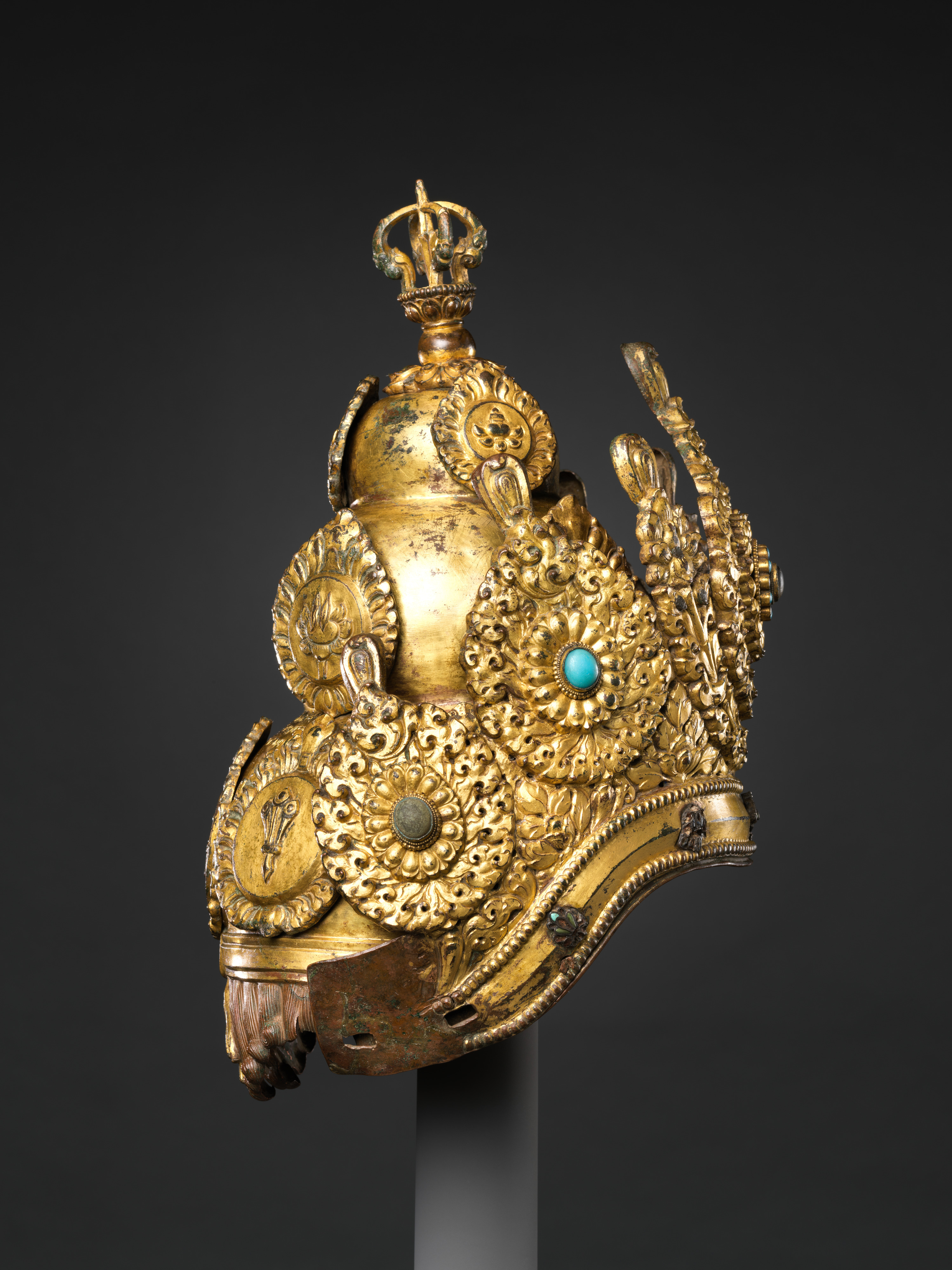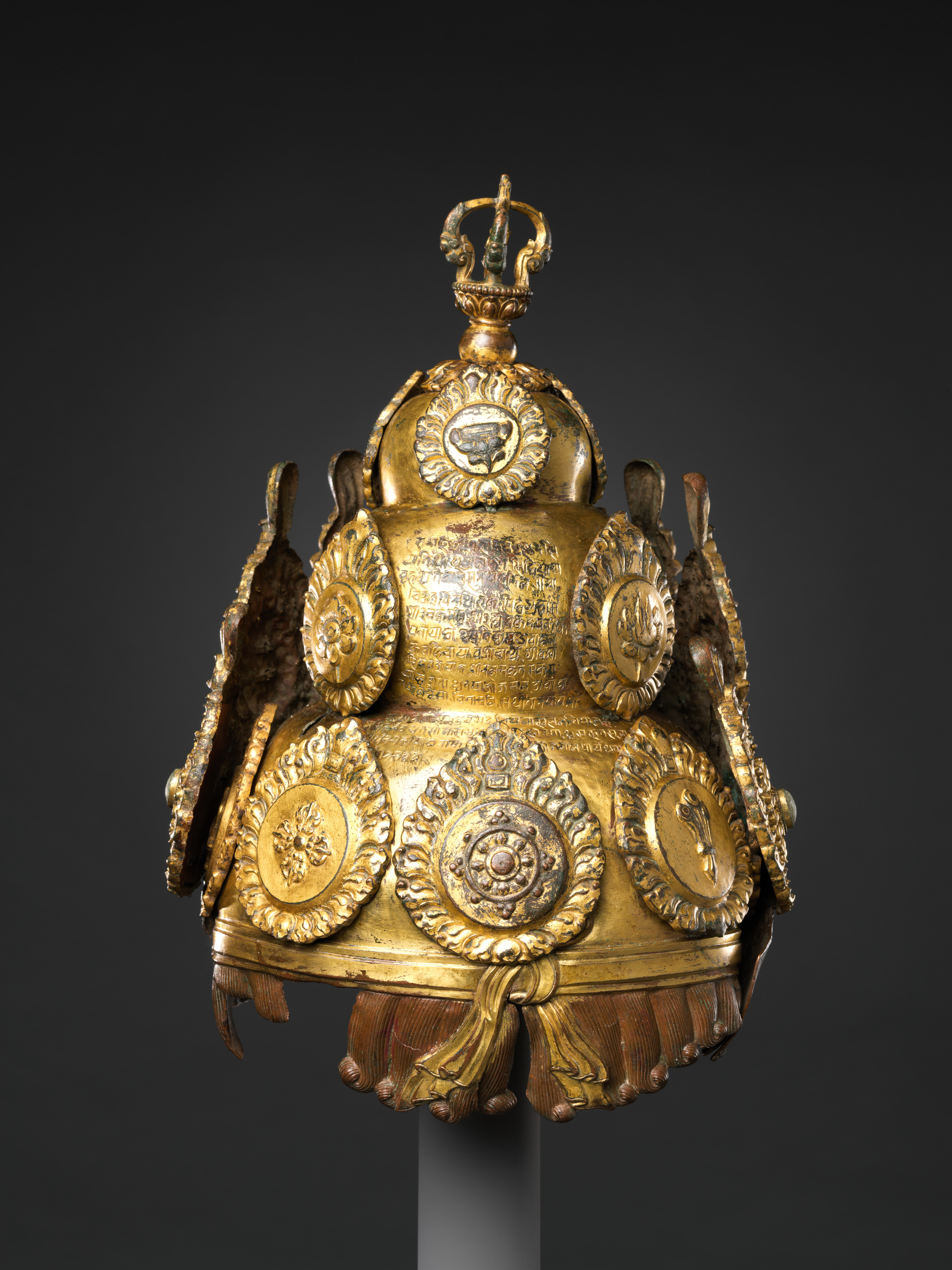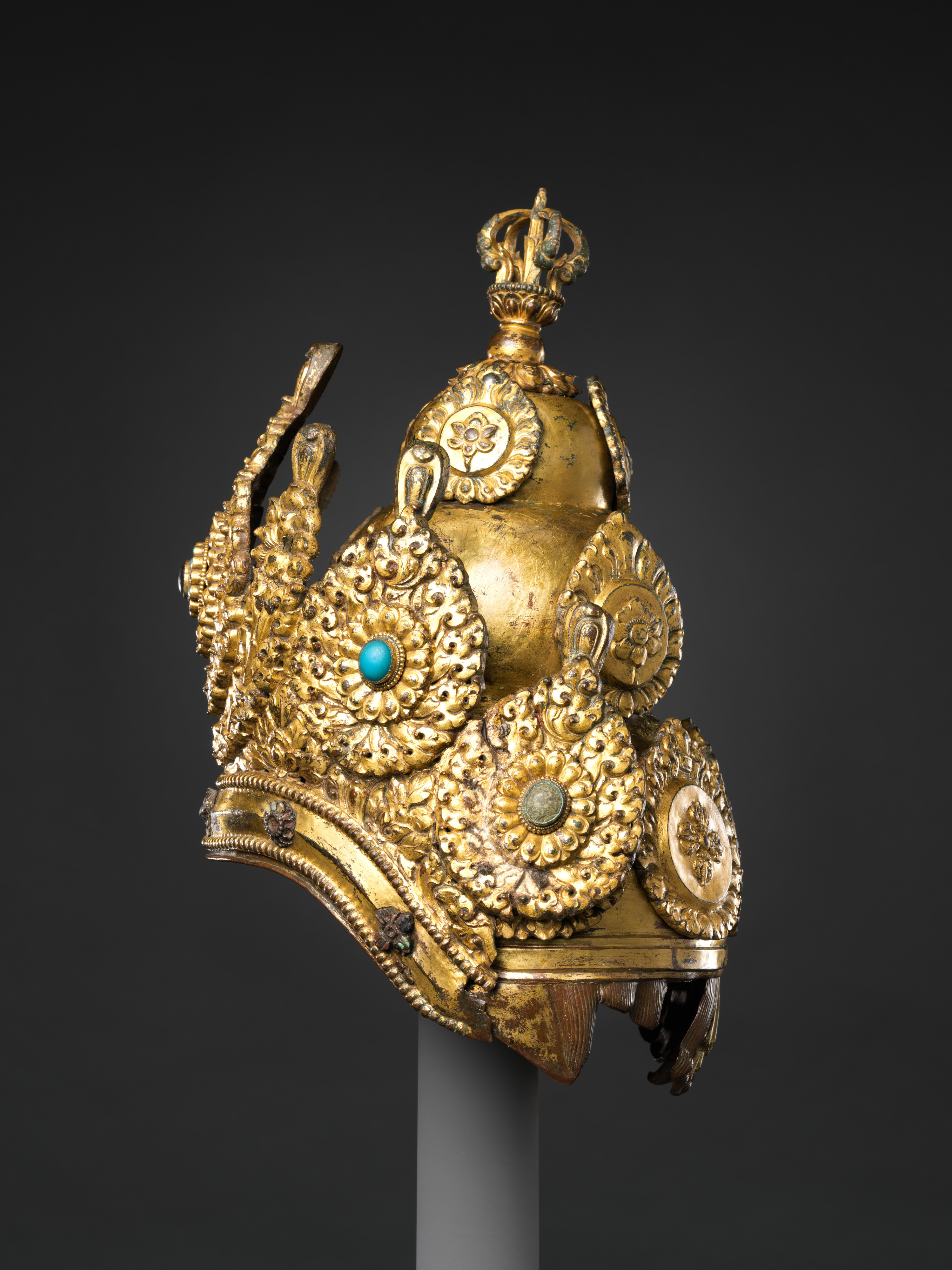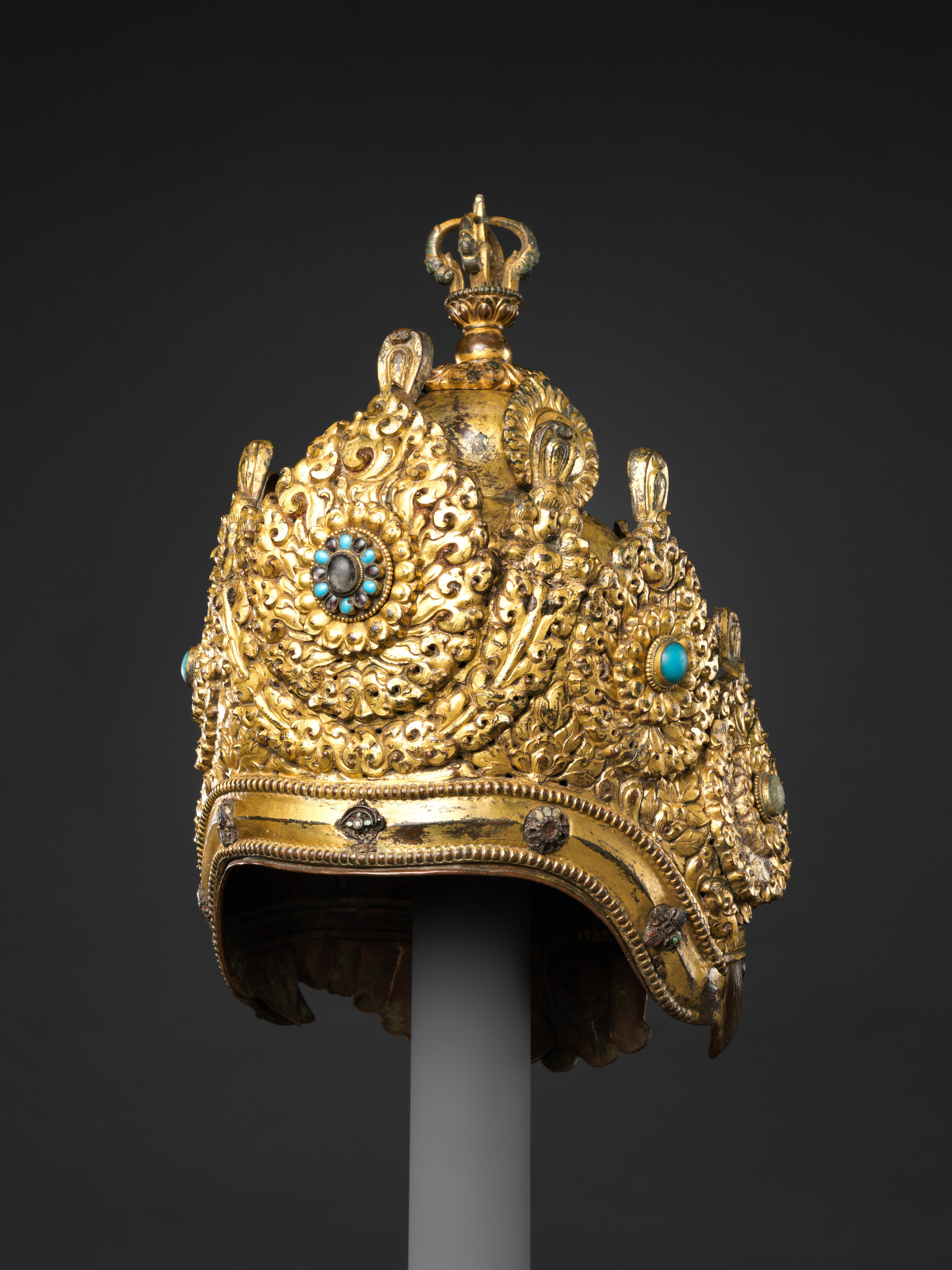Vajracharya Priest’s Crown
Elaborate crowns such as this example were worn by the hereditary Vajracarya Buddhist priests of Nepal, who occupy the highest rank in the Nepalese Buddhist community. Vajracarya is both a caste and a family name, and the designation entitles it holders to perform reserved priestly functions, analogous to the privileges held by Brahmans in Hinduism. This crown is dominated by five diadem plaques and surmounted by a half-vajra. The dated inscription records that it was commissioned by two named devotees, to be worn on the occasion of the consecration of newly installed icons of Chakrasamvara and Heruka. The consecrations were performed by srī Bekhāsi deva Vajrācārya of Naka Bahicā of OBāhā, "on Thursday, the 10th of the dark half of Bhādra, during the Pusyā naksatra and the Siddha yoga" (1717). The inscription concludes by listing the punishments incurred by those who covet the crown as well as the merits earned by its donors, extolling: "[May it be] auspicious for all time."
Due to rights restrictions, this image cannot be enlarged, viewed at full screen, or downloaded.
This artwork is meant to be viewed from right to left. Scroll left to view more.






